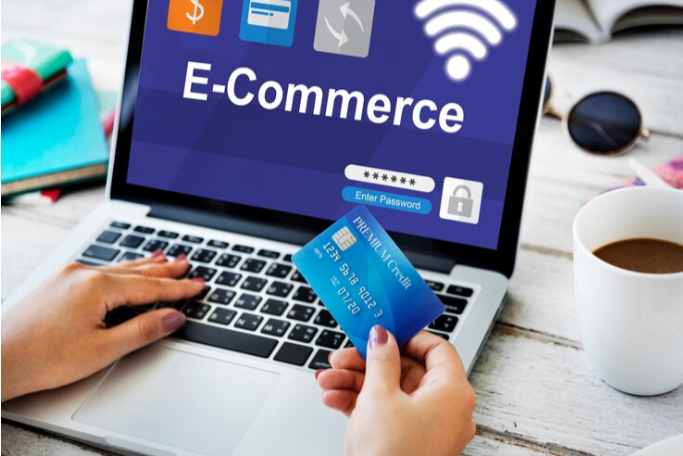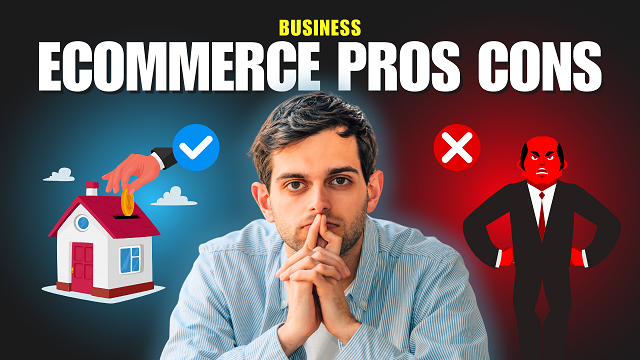In this article, we come to know what is ecommerce? its history and types. Through the e-commerce platform, you can buy and sell things over the internet. This platform works in various categories of market segments like smartphones, tablets, and other smart devices.
Approximately every imaginable product or service in the ecommerce business includes music, books, air tickets, and financial services like online banking and stock investment. This is considered a disturbance technology.
Understanding E-commerce
As we mentioned above, e-commerce is a platform where you can buy and sell online products and services. One or more people can be included to take action in the transaction, along with the data and currency exchange.
This is part of a big industry that’s called electronic business. In this method, you have to do different things to run the company.

E-commerce helps businesses ( especially small businesses that don’t have access to big resources) by providing effective distribution channels so they can access the biggest markets easily. A target has completed the presence of bricks and mortar in the online store.
This thing permits the customers to make the clothes, coffee, from homes and also action figures from their homes right now.
Providing services and goods is not as easy as it seems. For this, you have to research the products and services that you want to sell.
Special Considerations
We’ll learn about what is ecommerce? its history and types. In the above lines, we have read what e-commerce is and now we are going to study its special consideration. E-commerce has changed the method of buying things.
If they want something they order online through their mobile or smart devices. And the products are delivered to their home. Like this, they have affected the retail land decoration. Amazon and Alibaba have got amazing popularity and this thing forces the general retailers to change things according to their methods.
History of Ecommerce
Of all of us, we have undoubtedly done online shopping. That means we all have taken part in ecommerce. If we say that e-commerce is everywhere, it won’t be wrong. But very few people know the history of e-commerce that started before the internet.
Ecommerce goes back to the 1960 century when companies used the electronic system named electronic data interchange for the facility of document transfer. There is an online retail website named NetMarket where sales of CDs are included among friends.

After this, the industry went through so many modifications. Consequently, so much evolution happens. Retailers and traditional mortars are forced to accept the latest technologies like Ali Baba, Amazon, eBay, and many others to stay afloat.
These companies add a virtual market for the equipment and services where people can buy anything and easily have access to this market.
Advantages and Disadvantages of Ecommerce
Many people asked about what is ecommerce, its history, types and its pros & cons. We have studied ecommerce and history, now let’s read about the advantages and disadvantages.
Convenience
E-commerce is available 24 hours a day and seven days a week. Although ecommerce may take a lot of work, it is possible that you generate the sale while sleeping and you get the money when you are far from your store.
Increased Selection
Many online stores offer an array of products and they go to their mortars and retailer projects. Many stores that are just present online, offer specific inventory to their customers that is not available anywhere.
Potentially Lower Start-up Cost
E-Commerce companies need warehouse and manufacturing sites but generally, they don’t need any physical front. If you work digitally then you don’t need any extra expenses as compared to physical ones like rent, insurance, and property tax.
International Sales
As long as the commerce store can send the customer, an online company can sell anything in the world and is not limited in terms of geography.
Easier to Retarget Customers
As the customer browses the digital storefront, keeping their attention, advertisements, directed marketing campaigns, or specifically for the aim it is easy to attract pop-ups.
Disadvantages
Ecomerec also has some disadvantages. Let’s learn about these in the next lines:
Limited Customer Service
If you are online shopping for a computer, you cannot ask anybody to show the attributes of this product. Although many websites allow you to talk with their team, it is not a common practice.
Lack of Instant Gratification
When you buy something online, you must wait for it to be sent to your home or office. However, e-tailers like Amazon offer the premium option for the selected products and deliver the products in one day making the waiting process less painful.
Inability to Touch Products
Online images don’t need to represent the whole story of the product or service. So ecommerce shopping is unsatisfying at times when the received products are not according to the receiver’s expectations. You can take the examples of clothes and any other products.

Types of Ecommerce
There is a question asked by many people: what is ecommerce? its histroy and types.
After knowing the pros and cons of ecommerce, we are going to study the e-commerce types.
Business-to-Consumer (B2C)
B2C e-commerce companies directly sell the products to the end user. Instead of dividing the luggage, a B2C company does the transactions with the users. The user will use it ultimately.
This type of product model can be used for selling (general sports website) or like the mobile app for lawn care for the services of booking landscaping). This is the least general model and possibly it is the concept that people think so much when they hear the term ecommerce.
Business-to-Business (B2B)
Like B2C, a B2B business also sells the products directly to the users. However, instead of a user, the user can be the other company.
In B2B transactions, multiple things are included like a big quantity, huge specifications, and long-term lead times. The company that gives the order can need the recurring luggage if the shopping is for the repeated manufacturing process.
Business-to-Government (B2G)
Some institutions have skills as government contractors that provide services and products to the administrations or agencies. As with B2B relations, the business prepares precious things and sells these products to other institutions.
B2G always must meet the criteria the government requests for the proposal needs project bids and solicit for particular service criteria. Except this, on the government level, through an acquisition agreement, there may be a variety of efforts of the same government.
Consumer-to-Consumer (C2C)
The C2C platforms can be like an auction styling listing or provide the guarantee of the service or products that are offered like Craigslist posting.
Through the technology, the active C2C e-commerce platform empowers the companies for the transactions without the needs of companies.
Consumer-to-Business (C2B)
The latest platforms allow users to keep in touch and offer products to the companies. Specifically for short-term agreements, gigs, or freelance opportunities. For instance, focus on the upwork and Fiverr listing as well.
Consumer-to-Government (C2G)
Less than a traditional ecommerce platform, through C2G partnership the users can talk with the management, government, or agencies. This partnership is not in the exchange of service rather it is for the responsibility transaction.
Final Thoughts
In this article, we learned in detail what is ecommerce, its history, and its types. E-commerce is the part of running an e-business. E-commerce means just buying things from the internet. There are many online platforms like Amazon, eBay, and other platforms that have changed the online transaction method a lot.

1 Comment
Pingback: Everything You Need to Know About Converting 246 BRL to USD - Business Innovation